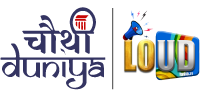Peer-to-peer (P2P) lending has emerged as a disruptive force in the financial landscape, redefining the traditional credit system through decentralization and innovative mechanisms. Here are 27 key factors that contribute to the remarkable transformation of the decentralized credit system within P2P lending:
1. Direct Borrower-Lender Connection: Enabling direct interaction between borrowers and lenders, fostering transparency and trust within the lending process.
2. Lower Interest Rates for Borrowers: Offering competitive interest rates compared to traditional financial institutions, making credit more accessible and affordable for borrowers.
3. Diversified Investment Opportunities for Lenders: Providing a range of investment options for lenders to diversify their portfolios and manage risk effectively.
4. Credit Scoring Models Based on Alternative Data: Utilizing alternative data points to assess creditworthiness beyond traditional credit scores, expanding access to credit for individuals with limited credit histories.
5. Secure Blockchain-Based Transactions: Ensuring secure and tamper-proof transactions through blockchain technology, enhancing the overall trust and security of the lending platform.
6. Efficient Disbursement and Collection Processes: Streamlining loan disbursement and collection processes through automated systems, reducing administrative burdens for both borrowers and lenders.
7. Customizable Loan Terms and Conditions: Allowing borrowers and lenders to negotiate and customize loan terms and conditions based on mutual preferences and requirements.
8. Robust Risk Assessment Mechanisms: Implementing comprehensive risk assessment methodologies to evaluate borrower profiles and mitigate potential default risks.
9. Community-Driven Credit Evaluation: Leveraging community insights and feedback to assess borrowers’ credibility and repayment capabilities, enhancing the accuracy of credit evaluations.
10. Smart Contract Implementation for Loan Agreements: Automating loan agreements through smart contracts, ensuring adherence to predefined terms and conditions without the need for intermediaries.
11. Liquidity and Secondary Market Platforms: Offering liquidity options for lenders through secondary market platforms, allowing them to buy and sell existing loans to manage their investment portfolios efficiently.
12. Transparent Fee Structures: Maintaining transparent fee structures for borrowers and lenders, enabling them to understand the costs associated with borrowing and investing.
13. Global Accessibility and Inclusion: Promoting global accessibility and financial inclusion by connecting borrowers and lenders across geographical boundaries, fostering a more inclusive financial ecosystem.
14. Compliance with Regulatory Standards: Ensuring compliance with relevant regulatory standards and guidelines to safeguard the interests of both borrowers and lenders within the P2P lending platform.
15. Social Impact Investment Opportunities: Facilitating social impact investment opportunities by supporting loans that contribute to sustainable development and social welfare initiatives.
16. Automated Repayment Schedules: Enabling automated repayment schedules for borrowers, ensuring timely and systematic loan repayments without manual intervention.
17. Diverse Borrower Profiles and Use Cases: Catering to diverse borrower profiles, including individuals, small businesses, and entrepreneurs, with various use cases for borrowing capital.
18. Peer-to-Peer Network Support and Guidance: Providing peer-to-peer network support and guidance to assist both borrowers and lenders in making informed financial decisions and managing their investments effectively.
19. Economic Empowerment for Borrowers: Empowering borrowers by providing access to affordable credit, fostering entrepreneurship, and driving economic growth within local communities.
20. Algorithmic Credit Risk Management Tools: Deploying advanced algorithms and machine learning models to manage credit risks and predict borrower repayment behavior accurately.
21. Educational Resources on Financial Literacy: Offering educational resources and tools to enhance financial literacy among borrowers and lenders, promoting responsible borrowing and investment practices.
22. Real-Time Monitoring and Reporting Systems: Establishing real-time monitoring and reporting systems to track loan performance and provide timely updates to lenders regarding their investment portfolios.
23. Secure Data Privacy and Confidentiality Measures: Prioritizing data privacy and confidentiality by implementing robust security measures to protect sensitive borrower and lender information from unauthorized access or breaches.
24. Efficient Dispute Resolution Mechanisms: Implementing efficient dispute resolution mechanisms to address conflicts and issues that may arise during the lending process, ensuring fair and timely resolution for all parties involved.
25. Innovative Debt Recovery Strategies: Employing innovative debt recovery strategies to recover outstanding loans, utilizing a combination of technological solutions and personalized communication approaches.
26. Community Building and Trust-Building Initiatives: Fostering a strong sense of community and trust among borrowers and lenders through networking events, forums, and social engagement activities.
27. Continuous Platform Evolution and Innovation: Committing to continuous platform evolution and innovation to adapt to changing market dynamics and incorporate the latest technological advancements in the P2P lending ecosystem.
The decentralized credit system within P2P lending continues to redefine the traditional lending landscape, promoting financial inclusivity, transparency, and innovation. As the sector continues to grow, these key factors will play a vital role in shaping the future of credit accessibility and lending practices worldwide.















